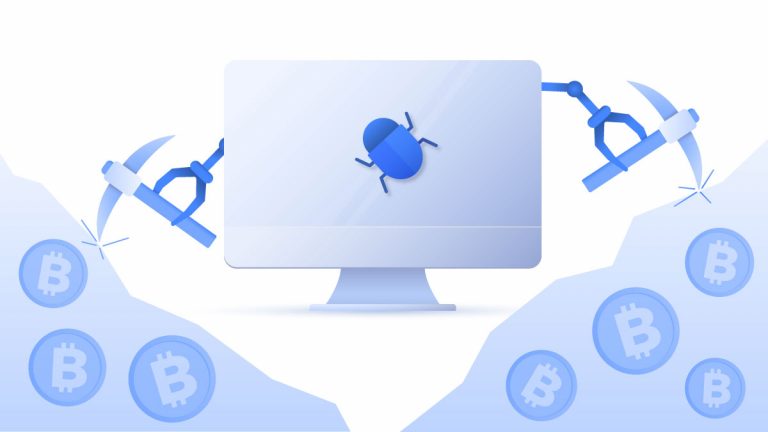2019-8-7 20:08 |
Introducing The Crypto Demystified Series
Welcome to the cryptocurrency guide! If you’re new to the world of cryptocurrencies and are looking to learn more about them without the complicated jargon, you’ve come to the right place. You might have heard of cryptocurrencies before, and have some questions about what it is and how it works. In this series, Altcoin Fantasy has teamed up with CoinMarketCap’s education initiative to address important cryptocurrency topics in easy-to-digest parts. We hope to make learning about crypto accessible to anyone who is interested. Our series is organized as follows:
1) How cryptocurrency works
2) How to purchase cryptocurrencies
3) Coin & exchange listings and what to look for
4) How to get free crypto
5) Crypto wallets 101
6) Software wallets and reviews of the most popular wallets
7) Hardware wallets and reviews of the most popular wallets
8) How to spend crypto online and offline
9) How and where you can use crypto
10) Information sites to continue your cryptocurrency educational journey
These topics provide a solid understanding into the fascinating world of cryptocurrencies. We encourage you to keep learning and reading about this topic. Don’t forget, you can always keep up to date with the latest in cryptocurrencies and exchanges by referencing the CoinMarketCap site!
How Cryptocurrency WorksIn this first article, we’ll be guiding you through what cryptocurrencies are, why they’re important, how they work and how they differ from traditional currencies.
What is a cryptocurrency?In order to understand cryptocurrencies, let’s start with what a currency is. A currency is a form of money issued by a government and used in a specific geographic location. Currencies are used to transfer value from one person to another and are represented in various forms (e.g. bank notes, coins, etc). Modern currencies are typically centralized, meaning they are controlled by one entity, such as a nation’s government or central bank.
Cryptocurrencies are digital representations of money rather than physical traditional currencies. Unlike traditional currencies, cryptocurrencies are not issued or controlled by a central authority. This makes them decentralized, as cryptocurrency transactions are executed and managed by technology to carry out the same functions that a central bank normally would, such as issuing new amounts of the cryptocurrency (i.e. minting new coins) and verifying transactions.
Cryptocurrencies are broken down into two types – coins and tokens. Coins are cryptocurrencies that can operate independently and have their own platform or blockchain. Examples of coins are Bitcoin, Etheruem, Litecoin, Ripple, Stellar and Doge. Tokens are cryptocurrencies that operate on top of another cryptocurrency’s platform or blockchain. They may have a particular function or “use” within a platform. Some examples of tokens are Binance Coin, Augur, 0x and OmiseGo. Cryptocurrencies, whether coins or tokens, are purchased, transferred and held in cryptocurrency wallets.
Why are cryptocurrencies important?You might be asking, why exactly are cryptocurrencies so important? Why do we need cryptocurrencies when we already have currencies that exist in physical form?
Cryptocurrencies have a number benefits, which solve problems that exist among centralized currencies and financial institutions today. These benefits are: trustlessness, security, immutability, permissionless, speed, borderless and anonymity.
Firstly, we must list the problems that exist with centralized currencies today:
You must trust your bank to keep accurate records of your money and your transactions You must trust the bank to hold onto your money without losing it or giving it someone else It can days or even up to a week for fund transfers to clear before you can access your own money Currencies in each country can only be used within their designated geographic locations. Exchanging currencies can result in a loss from fees and different currency valuations All transactions are traceable and tracked; therefore, governments or central banks can choose to prevent you from sending or receiving money to certain countries or individuals Not everyone within each country has access or equal access to banking The sender and recipient of the currency are charged by financial institutions to move their funds from one account to anotherCryptocurrencies aim to solve these problems through decentralized technology, also referred to as blockchain technology, which makes up the internal operating structure of cryptocurrencies. Instead of having a single entity or authority that tracks and enables transactions, blockchains use a network of computers around the world to send, record and verify each transaction.
With a centralized currency, you must trust a third party such as a bank or a payment provider to accurately track, protect, and manage your funds. However, with cryptocurrencies, computers on a network are recording and agreeing to the validity of all transactions through a predetermined process known as consensus algorithms. Therefore, you do not have to put your trust in one party, which are susceptible to bias or human error. Cryptocurrencies are called trustless because you do not have to trust one party to be the source of truth.
There is a large number of computers that maintain transaction records and are constantly comparing their data with the rest of the network. The computers are unrelated to each other and therefore each keep separate records of the transactions, a concept known as a distributed ledger. Any changes to past transactions must be verified and approved by all computers on the network. The only way for the transactions to be changed would be for a hacker to hack into over 50% of the computers on the network and approve a change in past transactions or omit a transaction that has occurred. This is called the 51% attack. However, as there are hundreds of thousands, or even millions, of computers on a network, it’s almost impossible for a hacker to overtake all of these computers, which are spread all around the world. Thus, decentralization makes transactions secure and immutable, or unchangeable.
Another important aspect of blockchain technology is that it is permissionless, meaning that anyone can use cryptocurrencies. In many countries around the world, people are unbanked, unable to obtain a bank account. Cryptocurrencies can solve this problem by allowing equal access for everyone.
Cryptocurrencies are borderless, and allow anyone to transact with someone from a different country at significantly lower processing fees. Because cryptocurrencies are not controlled by banks or slowed down by international borders, transactions occur 24/7, at much faster speeds since there are no banking hours to abide by. In addition, transaction fees are substantially lower than banking fees and do not increase based on the amount that is being transacted.
Finally, cryptocurrencies are anonymous because no personal information is required for someone to use cryptocurrencies. Unlike bank accounts, where personal information is required in the registration process, signing up for a cryptocurrency wallet and using cryptocurrencies requires no personal information at all. The result is that governments or central banks cannot control or restrict who is sending or receiving funds this way.
To understand how cryptocurrencies work today, we need to go back in time to see how digital currencies were first introduced and what their subsequent versions looked like. Understanding the history and evolution of digital currencies will provide insight into why cryptocurrencies are built the way they are today.
History of CryptocurrenciesMany people credit Bitcoin as the first cryptocurrency, and while Bitcoin is the first digital cash created using blockchain technology, there have been many prior attempts to create digital currency. All of these however, ran into the same set of problems, which were later solved with the implementation of blockchain technology, transforming Bitcoin into the first sustainable and successful peer-to-peer digital cash system.
1982: DigiCash
David Chaum, a computer scientist seen as the father of electronic cash, published an article in 1983 titled “Blind Signatures for Untraceable Payments”. In the article, he outlines a new technology called Blind Signature Technology, that would make electronic payments untraceable and anonymous, yet free from counterfeit using cryptographic protocols. Cryptographic protocols are the means in which data is secured using cryptography. Cryptography is a process where data is encrypted or hidden so that an unauthorized party cannot read the data. Someone must have the key in order to decode the data and read the information.
To see his vision through, Chaum formed a company in 1989 called DigiCash. However, the concept was ahead of its time and it ran into many issues with adoption. Firstly, DigiCash offered the ability for digital payments at a time when e-commerce didn’t yet exist and there was no market for it. Secondly, when e-commerce did gain popularity, the focus of DigiCash was on anonymity of the transactions, while consumers cared more about convenience and making purchases online easily.Chaum had a difficult time convincing merchants to accept DigiCash in a time when credit cards were accepted widely. Customers didn’t believe that credit cards were unsafe or unsecure, or that DigiCash was necessarily more secure than credit cards. Thirdly, despite much excitement and attention around DigiCash, including an agreement from Microsoft to include DigiCash on all PCs for $180M, Chaum mishandled these deals and nothing came to fruition. Moreover, Chaum was a big proponent of patents and copyrights, which meant few people were able to access and understand DigiCash. By 1998, the company filed for bankruptcy after running out of liquidity.
These occurrences are important to understand because they not only set up the framework for the later introduction of cryptocurrencies or digital currencies, but also foreshadow the limitations that future cryptocurrencies would need to solve.
1996: E-Gold
The next iteration of digital currencies came in the form of e-gold, created by Douglas Jackson and Barry Downey. Their idea was that they would lock gold up into a safe and sell off digital portions of that gold. The new shares were then called e-gold. E-gold was revolutionary as it was the first digital payment system to reach one million users, and was enacted as the first non-credit card online payment option. It was also the first micropayment system, allowing people to send fractions of a gram of gold to someone without incurring huge transaction fees, by dividing shares of e-gold into micro amounts and sending the shares to someone digitally.
Due to its success, e-gold became the target of many phishing, hacking and fraud schemes, which compromised many e-gold accounts. Account holders who were victims of fraud began complaining to government authorities. In 2007, e-gold was charged for operating as a money transmitter business without the proper licensing. A money transmitter business is defined as a business that cashes cheques or remits (“sends”) money from one person to another across international borders. E-gold was never required to have licensing since it did not fall under the definition of a money transmitting business, and was not considered to be a currency. However the definition of a money transmittal business was amended to include any system that allowed the transfer of any kind of value from one person to another, and was not limited to national currency or cash.
In 2008, the company and its directors entered into a plea agreement to the charges. The company was directed to resume operations as a regulated financial institution but because the company had pleaded guilty, it was restricted from obtaining a license in the US.The founders of e-gold came to an agreement with the government to act as an intermediary to help return the outstanding amount of money held in e-gold accounts to the account holders.
1998: B-Money
In 1998, Wei Dai, a computer scientist, introduced a paper for a currency called B-Money that would function as an “anonymous, distributed electronic cash system”, and allow people to pay each other while enforcing contracts anonymously, without the need for a third party. He outlined how the data would be stored, how money could be created, and how it could be transferred.
B-Money outlined many of the same features that cryptocurrencies have today, such as computational work to enable transactions (i.e. proof-of-work), verification by the community in a collective ledger and a reward for workers who contribute in this community (i.e. mining rewards). Although B-Money stayed as a concept and was never launched, it didn’t go unnoticed. B-money was referenced in the Bitcoin whitepaper, released 10 years later.
1998: Bit Gold
That same year, Nick Szabo first came up with the idea of Bit Gold in 1998, although he didn’t publicly release it until 2008. His idea involved both cryptography and mining in order to achieve decentralization. Because Szabo had worked at DigiCash, he saw firsthand how centralized systems led to security breaches and the ability to control other people’s money. He wanted to create a form of money that didn’t rely on the trust of a third party.
His outline of Bit Gold included the Proof-of-Work required to “mine” Bit Gold, how digital ownership was determined and transferred, how the ownership registry would be maintained by its members, and how to solve for inflation of Bit Gold.
In 2008, Szabo publicized Bit Gold on his blog, and put out a call for someone to help him code his vision. However, no one responded and his vision of Bit Gold never came to be.
2008: Bitcoin
That same year, a paper titled “Bitcoin – A Peer to Peer Electronic Cash System” was posted to a discussion on cryptography by someone named Satoshi Nakomoto. The paper described the functionality of a peer to peer electronic or digital cash called Bitcoin that would be completely anonymous, decentralized and trustless. Drawing upon the works of Hashcash and B-Money, it used some of the same ideas previously proposed such as digital signatures, proof of work, hashing transactions together and incentivizing those in the network for their work. Nakomoto also solved for the inflation issue by decreasing the mining reward over time, and limiting the supply of Bitcoin to 21 million to create scarcity. Eventually bitcoin would be completely issued, and miners would only be incentivized to continue mining via transaction fees.
2009: The Genesis Block
Bitcoin’s first block was mined in 2009 (called the genesis block and also known as Block 0), taking six days to generate. The first 50 bitcoins are actually unspendable and there’s a debate about whether this was intentional or an error. Several days later, the first Bitcoin transaction occurred when Satoshi Nakamoto sent 50 bitcoins to Hal Finney, a computer scientist involved with the cypherpunks of the ‘90s and 00’s and may have even known who Satoshi was.Some even speculate that Hal Finney is Satoshi.
2010: First Crypto Use Case
A year later, Bitcoin was valued for the first time, when a Florida-based programmer named Laszlo Hanyecz sent 10,000 bitcoins to a man in London for two pizzas, valued at $25. The same year, two Bitcoin exchanges – Bitcoin Market and Mt. Gox – were launched and the first Bitcoin mining pool – Bitcoin Pooled Mining, aka Slush’s Pool – was formed.
2011: Arrival of Altcoins
Rival cryptocurrencies, called altcoins (named so because they are alternatives to the original cryptocurrency – Bitcoin), began to emerge. Litecoin, Namecoin and Swiftcoin were all launched that year. Bitcoin started to receive criticism after reports noting that it was being used on the Silk Road, an anonymous marketplace hosted on the TOR network which gained infamy for hosting drug dealings and illegal activity. However, that same year, Bitcoin passed $1 in value, climbing to $30 before falling back to $10.
2012: Mainstream Culture
Bitcoin prices crossed the $100 threshold. It managed to get an entire episode dedicated to it in the US drama, The Good Wife, with a fictionalized trial titled “Bitcoin for Dummies”, demonstrating its reach into mainstream culture.
2013: Bitcoin Fork
Due to a software bug, Bitcoin split into two blockchains called a “fork”, with two different ledgers existing simultaneously for a few hours. Because there had been a software update, which introduced a change to the code for the Bitcoin blockchain, it created two versions of the blockchain, with some miners adding transactions to the old chain and some to the new. It was quickly resolved with the majority of miners moving over to the correct chain within 6 hours of the fork. Bitcoin had increased to over $1,000 USD that year, but due to this bug, it came crashing down to $300 USD. The first Bitcoin ATM was launched in Vancouver, Canada.
2015: Ethereum
Etherem emerged as a favored competitor to Bitcoin. It not only had the same benefits that Bitcoin offered but it also offered the ability to create and execute smart contracts. Smart contracts are basically commands or functions that can be executed on the Ethereum blockchain when certain conditions are met. An example of a smart contract implementation is booking a room on Airbnb. It would contain preconditions that require a client to make a payment first, and upon receipt of payment, an electronic key or code is sent to him or her to access the Airbnb. If payment isn’t received by a certain date, you won’t get sent the key.
Ethereum also brought on the arrival of Initial Coin Offerings (ICOs). Companies such as Ethereum, Augur and NXT began using ICOs as an alternative fundraising vehicle to fund the development of their projects. In an ICO, a company will take a certain amount of tokens and release it to the public for sale (also called a crowdsale). These tokens do not give token holders any ownership of the company.
2016: Ethereum Fork
The Ethereum mainnet was launched in 2016 but due to a hack, it split into a hard fork, turning into Ethereum and Ethereum Classic. Many criticized Ethereum over the reversal of the hack due to its divergence against the ideals of censorship-resistance, decentralization and trustlessness. The original Ethereum users decided to stay on the original blockchain without reversing the transactions from the hacked funds. This became known as Ethereum Classic. Ethereum forked off and reversed the transactions, in order to return the stolen funds and get Ethereum back on track.
Bitcoin ATMs proliferated to 900 worldwide by the end of the year. The number of ICOs launched rose and began to be known as the venture capital disruptor.
2017: Bitcoin Cash and the ICO Era
Bitcoin experienced a hard fork over concerns around scaling, leading to Bitcoin and Bitcoin Cash. In December, Bitcoin reached an all time high of $20,000 USD. ICOs became the hottest new financial trend that both the general public and professional investors were highly interested in. Almost all cryptocurrency companies launched an ICO in order to raise funds to start developing their projects. This year, ICOs raised over $4B in funding from both individual and institutional buyers. The overall crypto market cap reached an all-time high in December 2017.
2018: Year of the STOs
Bitcoin and the crypto market experienced a severe decline after their runaway success at the beginning of the year. By September, the market cap dropped from $831B at its height in January, to $186B. Total funds raised in ICOs that year exceeded 2017 but many projects were unable to survive the bear market.
The SEC issued warnings that due to lack of regulation around ICOs that many of these projects could be scams posing as legitimate investments. Because of the large number of scams, the SEC also began looking very closely at ICOs and token sales to determine if these tokens should actually be considered securities, and as a result subject to securities regulations. This also led emerging crypto companies to focus less or not at all on public offerings but on private sales for accredited and institutional investors.
Another form of token offerings that launched, especially due to the backlash against ICOs, were Security Token Offerings (STOs). STOs operate very much like ICOs but they differ in a few key areas. STOs are regulated by securities laws, the tokens are backed by real world assets such as revenue or property/land, and the purchase of tokens confers ownership rights to the purchaser, unlike with ICOs. 119 STOs launched in 2018, and the majority of them were launched at the end of 2018.
2019: IEOs & Regulations
Hot on the heels of STOs are Initial Exchange Offerings (IEOs), which became another way for companies to launch fundraising campaigns based on selling crypto. With IEOs, crypto companies partner with an exchange and launch their token sale exclusively on that exchange.
In June, Binance a major exchange announced that it would restrict access to US traders but would launch a new, fully separate and regulated fiat-to-crypto platform for US users.
Facebook announced Libra, its stablecoin cryptocurrency which will be governed by the Libra Association, a not-for-profit organization. The Libra Association will oversee the development of the token, create a reserve to back the value of the token, and reside as a governing body over the Libra blockchain. The Association is backed by 28 founding members, each who has paid $10M to be a founding member.
Germany’s financial regulator, BaFin, plans to implement new Anti Money Laundering regulations, which will apply to crypto assets as well as security tokens. Crypto companies will be mandated to register and comply with customer due diligence requirements that are similar to those of any Forex or stock brokerages. The Senate Committee on Banking, Housing and Urban Affairs started a hearing on cryptocurrency and blockchain regulatory frameworks on July 30th. With crypto developments underway worldwide, regulatory frameworks for cryptocurrencies in each country is a question of when and how, not if.
Consensus AlgorithmNow that you know the history of cryptocurrencies, we can dive into how they work. Cryptocurrencies rely on two verification methods – asymmetrical cryptography as well as consensus algorithms. Asymmetrical cryptography is also referred to as public key cryptography. In public key cryptography, there are two important parts to how this works – (1) there’s a set of public keys that anyone can see and (2) a set of private keys that only the owner of the cryptocurrency wallet can see. The private key acts as your digital signature for transactions, confirming that the transactions are indeed being initiated and approved by you. The public key is the other piece used to confirm that the transaction is valid.
Since many cryptocurrencies are created on the principle of decentralization where no one entity has control over it, it’s crucial that something called double spending doesn’t occur. Double spending is an issue that can happen in digital payments, where the same currency is spent in different transactions (i.e. spent twice). Traditionally, the trusted entities (e.g. banks) manage and record all transactions to ensure this doesn’t happen. However, centralization brings up the previous vulnerabilities: people must trust that the bank is keeping truthful records and that it is able to keep large sums of money secure. In order to solve for this problem in digital currencies, the consensus algorithms was created as a way for digital transactions to become confirmed without the need for a central authority to maintain, secure and approve records.
With consensus algorithms, what happens is that all parties on a blockchain are keeping records of past and new transactions (called nodes), and also must agree on the validity of each transaction. This process is called consensus, and the way that these nodes reach consensus is through consensus algorithms. Consensus algorithms are a predefined method used to determine how transactions are validated and added to distributed “ledger” of transactions.
Consensus algorithms are crucial to maintaining the security and validity of the entire network because they provide a way for distributed systems to reach an agreement. The blockchain not only solves several problems that were experienced by the predecessors of this digital peer-to-peer currency, but it also tackles one particularly daunting problem referred to as the “Byzantine General’s Problem”. There is a constant possibility that untrustworthy parties might be engaged in selfish or damaging activities on the blockchain. The challenge is for the hundreds or thousands of nodes that exist to come to an agreement in a way that prevents bad actors from sabotaging the ledger and potentially changing the ledger. The Byzantine Fault Tolerance functions on the principle of the majority. As long as most of the nodes are honest and reach consensus, the right transactions will be validated and added to the next block and dishonest plans won’t prevail. With blockchain distributed parties don’t need to trust each other to obtain consensus on the validity of the existing ledger of transactions. There are many consensus algorithms that exist, with the two most common algorithms being Proof of Work and Proof of Stake.
In Proof of Work, computers on the network known as miners must solve complex mathematical puzzles using computing power in order to create new blocks for the blockchain. This process is called mining. A key feature of the puzzle is asymmetry, which means the problem is difficult for the miners to solve but once the solution is found, others can quickly verify if the solution is correct. Because mining requires the additional effort of solving equations, it’s unlikely that bad actors will try to sabotage the system since they have to put in a lot of work upfront to find the solution.The miner who solves the puzzle will have the right to verify the transactions within that block and have the right to add the new block to the previous block. They receive block rewards – an amount of cryptocurrency rewards for doing so. The rewards are given to incentivize miners to keep validating transactions. Notable projects which use PoW are Bitcoin, Litecoin and Ethereum.
In the Proof of Stake consensus, nodes are chosen to validate the blocks based on the amount of cryptocurrency held by a node (referred to as the amount of cryptocurrency that has been staked), rather than solving complex mathematical problems. Proof of Stake was developed as an alternative to Proof of Work because Proof of Work requires a lot of computing power and subsequently, a lot of energy.
Proof of Stake doesn’t require as much computational power as PoW, hence is seen as a more efficient alternative to Proof of Work. In PoS, because there are no complex problems to solve, there are no block rewards given. Instead, the nodes, called forgers or minters, receive transaction fees as rewards for validating the transactions. Forgers have the benefit of receiving rewards without expensive computing equipment, unlike in PoW. In the PoS consensus, because nodes are required to stake their own cryptocurrency as collateral, if there are any bad actors that validate fraudulent transactions or try to change the ledger, they will lose their own staked cryptocurrency and will be barred from the validator pool. Thus, there is an intrinsic incentive to ensure that the nodes are verifying transactions correctly.
Mining
In the previous section, we covered a brief explanation of mining – solving complex mathematical puzzles using computing power. Cryptocurrencies fall into three categories – mineable, non-mineable and pre-mined.
Mineable cryptocurrencies are generated through the mining process when miners solve mathematical puzzles. Examples of mineable cryptocurrencies are Bitcoin, Ethereum and Litecoin.
Pre-mined cryptocurrencies are those that were mined by the developers before being made publicly available for sale. A certain amount of tokens are sent to a wallet address before the mining program is shared with miners when the blockchain launches. Normally this is done as a means to raise funds through an Initial Coin Offering (ICO) in order to pay for the initial development of the project. Most companies that hold an ICO will pre-mine their cryptocurrencies before a public sale or the distribution of its coins. Examples of well known pre-mined cryptocurrencies are Ripple and NEM.
Non-mineable cryptocurrencies are those that are created all at once and can only be obtained through purchase. These cryptocurrencies reward users for keeping the coins in their wallet by providing interest on any coins held and the more coins that are held, the higher the interest. Non-mineable cryptocurrencies are also pre-mined. Examples of non-mineable cryptocurrencies are IOTA, Ripple and Cardano.
Mining cryptocurrency requires a slew of equipment. Generally, mining rigs are set up with graphics cards, a processor, a power supply, memory (RAM), cables and a fan to keep the machine cool as the energy required causes the machine to become extremely heated. A special mining program that is released by the blockchain project’s developers must be installed. This program tries to guess the hash for each block, which is a unique combination of alpha-numeric characters needed to solve the equation. It also verifies the transactions that occur within each block and keeps a record of these transactions.
Every blockchain has a target block mining time, in which the length of time it takes to solve a block, verify transactions and mine the block rewards stays the same, based on total computing power available in the network. For Bitcoin, this target time is 10 minutes per block. The difficulty level of the mathematical puzzles is adjusted for every blockchain to maintain a steady block creation time, despite increasing or decreasing mining power in the overall network. That means that the more miners that are mining, the more difficult the computational puzzle becomes. If fewer miners are participating, the difficulty is reduced so that the pace that blocks are created is maintained. An analogy for the difficulty of the puzzles is a thermostat, where the heat is automatically turned up or down depending on the weather, to regulate the temperature of a building.
Block rewards are awarded to the first miner who solves the next block’s computational puzzle. The probability that a miner will solve the equation and receive the reward is proportional to the total mining power on the network. With the increase in the number of miners and the establishment of giant mining facilities, this means that a single miner on the network today has a lower chance of solving the puzzle and receiving a block reward. To solve this issue, mining pools were created to increase the chances of miners receiving block rewards. Miners “pool”, or combine their computing power to receive regular payouts by sharing the block rewards when they are received.
Because mining requires so much energy, there are fixed costs that are associated with mining, starting with the cost of purchasing equipment to electricity required to keep mining. That means that the price of cryptocurrencies must maintain a minimum value in order for mining to remain profitable. This value will differ depending on the specific cryptocurrency but also on the physical location where the mining rigs are operating. For Bitcoin specifically, the average global cost in 2018 was about $4,000 USD to mine each Bitcoin. When Bitcoin hovered around the $3,500 to $4,000 level, it was actually unprofitable for miners to mine Bitcoin. However, most mining pools leverage the lower cost of mining in places like China where the average cost of mining Bitcoin is roughly $2,500 USD.
This is the hashrate distribution for Bitcoin mining pools:
Source: Blockchain.com
Cryptocurrency Supply
An important aspect of cryptocurrencies is called the supply of cryptocurrencies which is broken down into three types – circulating supply, total supply and maximum supply.
Circulating supply refers to the total available amount of cryptocurrencies that are available to the public and moving around the market. Total supply means the total amount of coins that have already been issued or mined, excluding the coins that were removed through burning. The max supply is the maximum amount of coins that will ever exist, including any coins that haven’t been mined yet or currently unavailable but will be in the future.
All of these are important to take into account when considering mining as well as investing in cryptocurrencies, as they will have an effect on the value of a cryptocurrency’s market capitalization – the cryptocurrency‘s total value of its circulating supply. To keep up to date on cryptocurrency supply and the market capitalization of blockchain projects, make sure you’re checking CoinMarketCap regularly!
——————-
This guide has walked you through the basics of how cryptocurrencies work and how they’re created. Next, we will be covering how and where you can actually purchase cryptocurrencies and get started in the exciting world of trading cryptocurrencies.
The post Understanding Crypto: How Cryptocurrency Works [Part 1] appeared first on CoinMarketCap.
Similar to Notcoin - Blum - Airdrops In 2024
Global Cryptocurrency (GCC) íà Currencies.ru
|
|




















